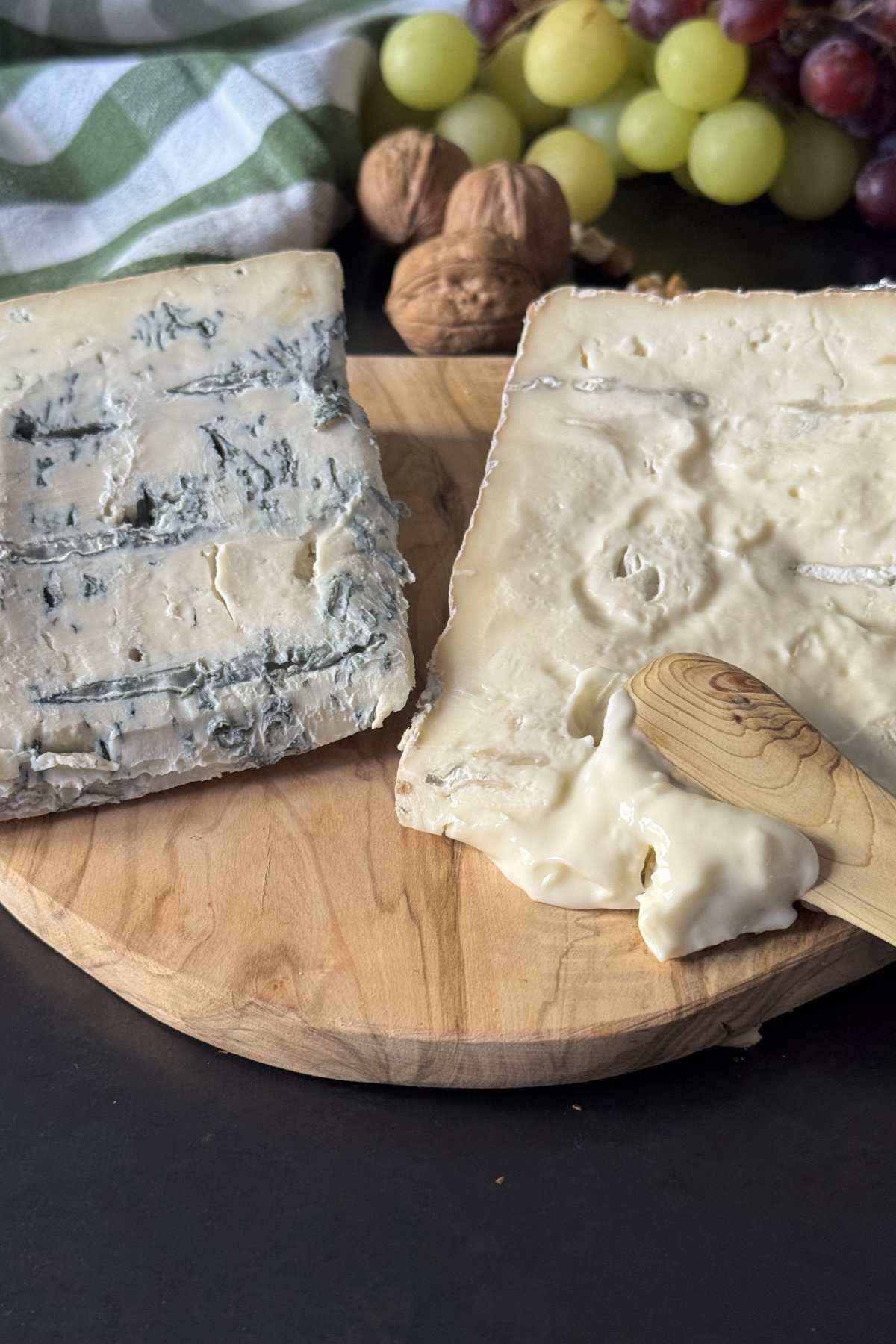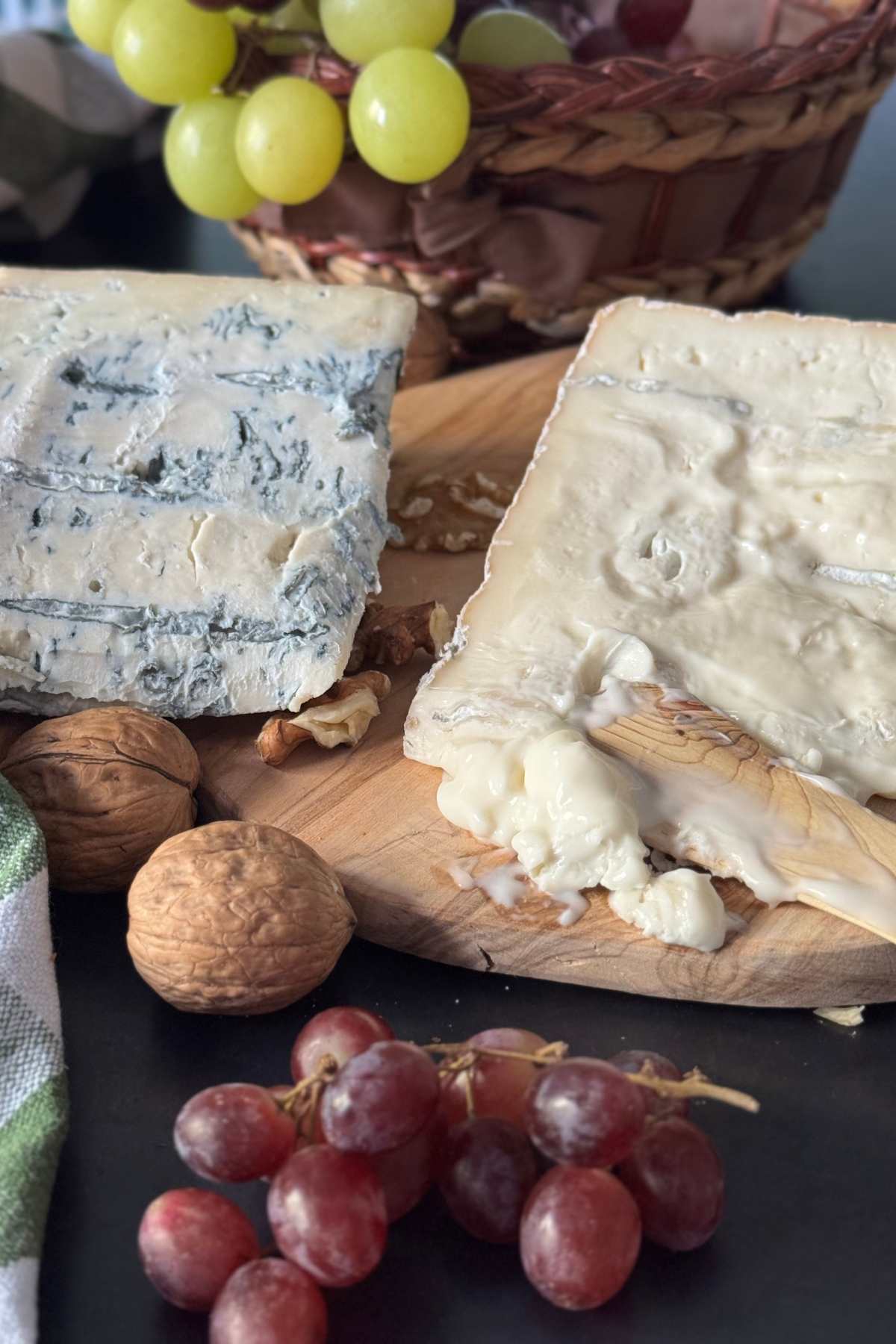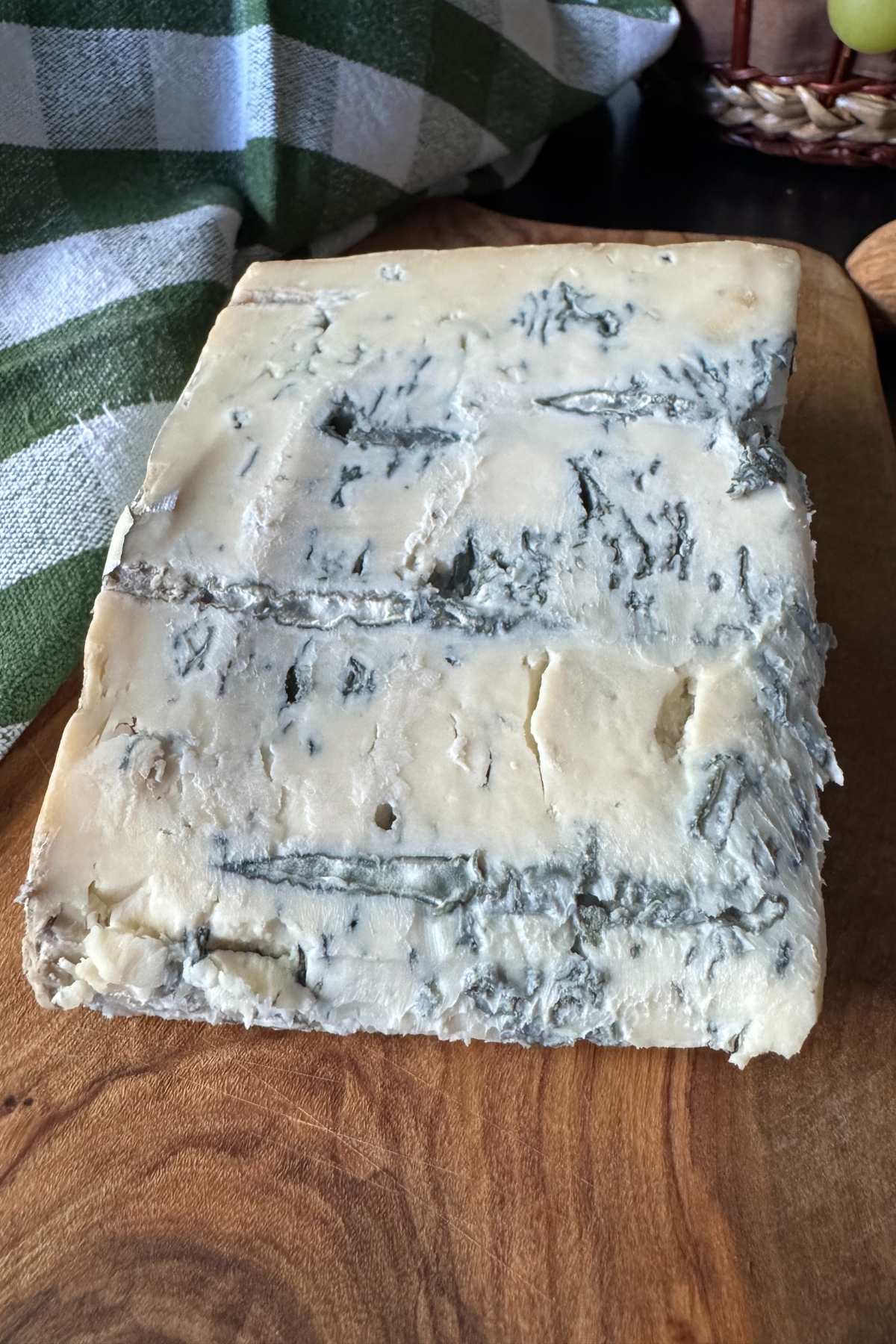Creamy, bold, and beautifully marbled with blue and green veins, Gorgonzola is one of Italy’s most fascinating cheeses.
With over a thousand years of history, this blue-veined cheese has traveled from small dairy farms near Milan to gourmet tables all around the world. Yet, behind its unmistakable look and flavor lies a story of tradition, terroir, and craftsmanship that few truly know.

Jump to:
A Thousand Years of History
The origins of Gorgonzola reach back to the Middle Ages, long before Italy was even a unified country.
The most charming legend says that Gorgonzola was born by mistake: a distracted cheesemaker, having mixed two batches of curd, created a cheese with streaks of blue mould that turned out to be delicious. Whether myth or truth, this “happy accident” took place around the town of Gorgonzola, just outside Milan, the birthplace that still gives the cheese its name.
By the 11th century, the area’s fertile plains and plentiful pastures made it an ideal place for dairy farming. Over the centuries, the local artisans refined their methods, perfecting a soft, buttery cheese that became prized across northern Italy.
Eventually, Gorgonzola’s fame spread beyond borders, earning it the prestigious Protected Designation of Origin (PDO) status, which guarantees that every authentic wheel is still made following strict traditional methods in its historic territory.
Where Gorgonzola Is Made
Only two regions in northern Italy are authorized to produce real Gorgonzola: Lombardy and Piedmont. Within them, the PDO designation limits production to specific provinces such as Milan, Novara, Vercelli, Como, and Pavia.
This protection ensures that the milk used comes exclusively from local cows grazing on those rich northern pastures, giving the cheese its characteristic flavor and texture.
In these dairies, centuries-old expertise meets modern control. The milk is pasteurized, cultured with lactic bacteria, and then inoculated with Penicillium roqueforti, the natural mould that gives Gorgonzola its distinctive marbling.
Once the curds are formed, they’re placed in molds, salted, and left to mature in cool, humid cellars. During aging, cheesemakers carefully pierce the wheels with metal needles to let air in. That oxygen allows the mould to spread, forming the beautiful blue-green veins that make this cheese so iconic.

Dolce and Piccante: Two Souls of Gorgonzola
Gorgonzola comes in two main varieties, each with its own character and culinary use.
- Gorgonzola Dolce, or “sweet Gorgonzola,” is soft, creamy, and mild, with a melt-in-the-mouth texture and a delicate, slightly tangy taste. It’s the version most people outside Italy are familiar with, perfect for spreading on bread or blending into risottos and sauces.
- Gorgonzola Piccante, on the other hand, is stronger, firmer, and more crumbly. Aged for longer, it develops a sharper, more complex flavour, with a spicy bite and a deeper aroma. It’s a favorite among cheese connoisseurs who appreciate its intensity.
Both types share a pale straw-colored interior, streaked with veins of blue mould that are completely edible. The rind, however, is not meant to be eaten.
Nutritional Properties and Health Benefits
While indulgent, Gorgonzola offers impressive nutritional value. It’s rich in high-quality proteins, vitamin A, vitamin B12, folate, calcium, phosphorus, and zinc, all essential for bone health and metabolism.
Another interesting fact: because of its long fermentation process, Gorgonzola is naturally very low in lactose (less than 0.1 g per 100 g). This makes it easier to digest and even suitable for people with lactose intolerance.
Some studies also suggest that blue cheeses like Gorgonzola may have cardioprotective effects, thanks to certain bioactive compounds produced during the ageing process.
Of course, moderation remains key, but within a balanced diet, a little Gorgonzola can bring not only pleasure but also nutrition.

A Comfort Food with Character
Ask any Italian and they’ll tell you that Gorgonzola is more than a cheese. It’s a comfort food. Creamy, rich, and deeply satisfying, it’s the kind of flavor that instantly warms the soul. Perhaps that’s why it has inspired so many recipes throughout the Italian culinary tradition.
From pasta al gorgonzola to risotto with gorgonzola, walnuts and pears, from savory tarts to creamy polenta, Gorgonzola has a way of turning humble ingredients into something luxurious.
In northern Italy, it’s also common to melt it gently with a splash of cream to make a silky sauce for gnocchi or short pasta. The more mature version, Piccante, pairs beautifully with grilled meats or even on top of a juicy steak, where its bold flavor stands out.
How to Enjoy It at Its Best
To fully appreciate Gorgonzola’s aroma and texture, remove it from the refrigerator about 30 minutes before serving. At room temperature, its creamy heart softens, and the flavors become more complex and rounded.
When buying, always look for the official Gorgonzola DOP logo on the foil wrapping: the stylized lowercase letters “g” and “c” intertwined. That symbol guarantees the cheese has been made under the supervision of the official Consorzio Gorgonzola.
Once opened, wrap the cheese in foil (not plastic film) and store it in an airtight container in the fridge. This helps maintain its moisture while preventing other foods from absorbing its strong aroma.

Pairing Gorgonzola
Gorgonzola Dolce loves fruits like pears, apples, or figs, and pairs beautifully with honey, nuts, and balsamic vinegar. It also goes perfectly with sparkling wines, sweet dessert wines, or light reds.
Gorgonzola Piccante, with its bolder flavour, prefers companions of equal strength: full-bodied reds like Barolo or Amarone, aged balsamic vinegar, or even a drizzle of chestnut honey. It’s also excellent with rustic breads, roasted vegetables, or simply on its own, with a glass of wine and good company.
Discover Our Recipes with Gorgonzola
Bring the flavor of authentic Gorgonzola DOP to your table with these traditional Italian recipes from our kitchen:
- Pear and Gorgonzola Muffins
- Mini Polenta Cakes with Gorgonzola Cream
- Grape Balls with Gorgonzola and Pistachios
- Savory Strudel with Pear, Gorgonzola and Walnuts

FAQs
For the creamiest texture and fullest aroma, take Gorgonzola out of the refrigerator about 30 minutes before serving. The Dolce version is best enjoyed at room temperature, spread on rustic bread or spooned directly onto a plate — hence the name “al cucchiaio”, meaning “by the spoon.” It’s also wonderful with fresh fruit, honey, or nuts.
Fresh Gorgonzola should smell pleasantly strong but never sour or ammoniacal. The surface should be moist and creamy, not dry or sticky. If the cheese develops an unpleasant odor, excessive liquid, or pinkish mold on the rind, it’s best to discard it.
The creamy Dolce type is usually too soft to slice like regular cheese. Use a spoon or a soft cheese knife to scoop it gently, starting from the center of the wedge. For firmer, aged Piccante, you can use a thin-bladed knife, wiping it clean after each cut.
Those colorful streaks are edible molds of the Penicillium family, added during production and allowed to grow thanks to air channels made during aging. They give Gorgonzola its distinctive aroma and slightly tangy taste. These molds are completely safe to eat and are what make the cheese so unique.





Leave a Reply